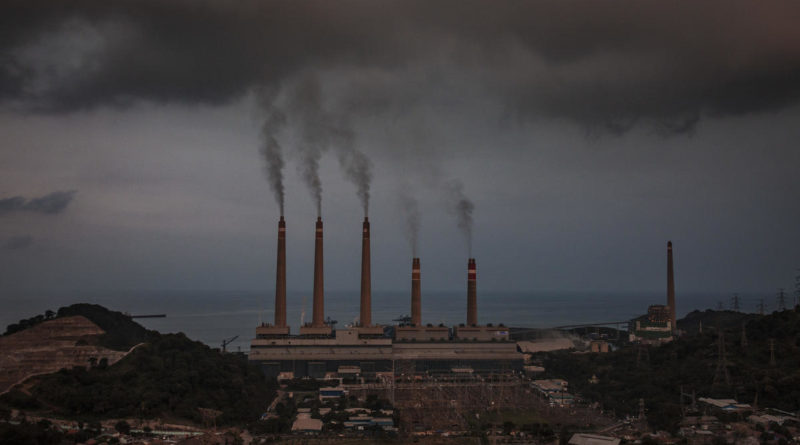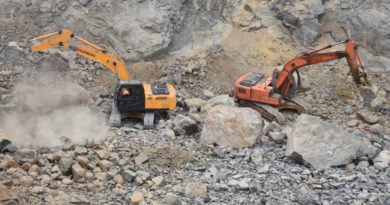India ‘houses’ 13 of world’s top 40 coal-fired anthropogenic SO2 emission hotspots
Close on the heels of top international environmental NGO Greenpeace reportedly identified six coal-fired power plants and industrial clusters as India’s “worst nitrogen oxides (NOx) hotspots” on the basis of data from Tropomi, a Dutch satellite instrument, the NGO has now found, on the basis of data obtained from NASA, that India houses 13 of the world’s top 40 anthropogenic sulfur dioxide (SO2) emitting hotspots, resulting from coal combustion.
If the Dutch satellite-based data had identified Sonbhadra-Singrauli in Madhya Pradesh and Uttar Pradesh, Korba in Chhattisgarh, Talcher in Odisha, Chandrapur in Maharashtra, Mundra in Gujarat and Durgapur in West Bengal as India’s NOx hotspots, the new Greenpeace study says, thanks to coal burning, India is the largest emitter of SO2 in the world, contributing more than 15% of global anthropogenic SO2 emissions from NASA detected hotspots.”
Causing environmental pollution and pollutants originating from human activity, anthropogenic SO2 is mainly produced from coal combustion, as also from oil and gas refining/ power generation and smelters. It is known to be impacting human health, ecosystems, agriculture, and global and regional climate.
India’s top 13 coal-fired anthropogenic SO2 hotspots identified out of the world’s 40 are Singrauli (Madhya Pradesh), producing 507 kilotons per year (kt/yr), followed by Neyveli (Tamil Nadu) 393 kt/yr, Talcher (Odisha) 347 kt/yr, Jharsuguda (Odisha) 301 kt/yr, Korba (Chhatisgarh) 280 kt/yr, Kutch (Gujarat) 228 kt/yr, Chennai (Tamil Nadu) 215 kt/yr, Visakhapatnam (Andhra Pradesh) 171 kt/yr, Ramagundam (Telangana) 157 kt/yr, Raigarh (Maharashtra) 154 kt/yr, Mundra (Gujarat) 148 kt/yr, Chandrapur (Maharashtra) 132 kt/yr, and Koradi (Maharashtra) 114 kt/yr.
 Titled “Global SO2 emission hotspot database: Ranking the world’s worst sources of SO2 pollution” by NGO researchers Sunil Dahiya and Lauri Myllyvirta, the study states, “More than 51% of total anthropogenic SO2 emissions are emitted in regions of high coal consumption for power generation and industries. Coal combustion for power generation is the major emission source, with smaller contributions from oil refineries/consumption, smelters and others.”
Titled “Global SO2 emission hotspot database: Ranking the world’s worst sources of SO2 pollution” by NGO researchers Sunil Dahiya and Lauri Myllyvirta, the study states, “More than 51% of total anthropogenic SO2 emissions are emitted in regions of high coal consumption for power generation and industries. Coal combustion for power generation is the major emission source, with smaller contributions from oil refineries/consumption, smelters and others.”

Criticizing the Government of India’s failure to control SO2 emission, the study underlines, “In a first step to combat the pollution levels, the Ministry of Environment, Forest and Climate Change introduced, for the first time, SO2 emission limits for coal-fired power plants in December 2015, but the deadline for the installation of flue-gas desulfurization (FGD) in power plants has been shifted from 2017 to 2022.”
In all, the study says, NASA satellite data captured more than 500 major point sources of SO2 emissions across the globe, including natural sources such as volcanoes. “Excluding all natural sources from our analysis and only investigating anthropogenic sources of SO2, we found a close correlation of high SO2 emission levels within regions that have high fossil fuel consumption i.e., geographies with high coal burning, oil refining and combustion as well as smelters.”
“Sixty percent of the total emissions detected by the satellite are anthropogenic. Regions with high capacity of coal combustion for power generation and industries, smelters, oil and gas refining/combustion contributed 31%, 10% and 19% respectively”, it adds.




